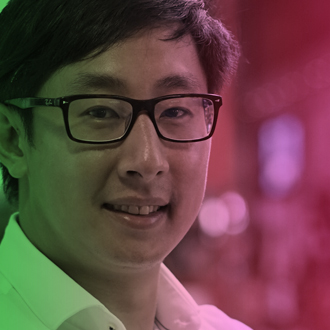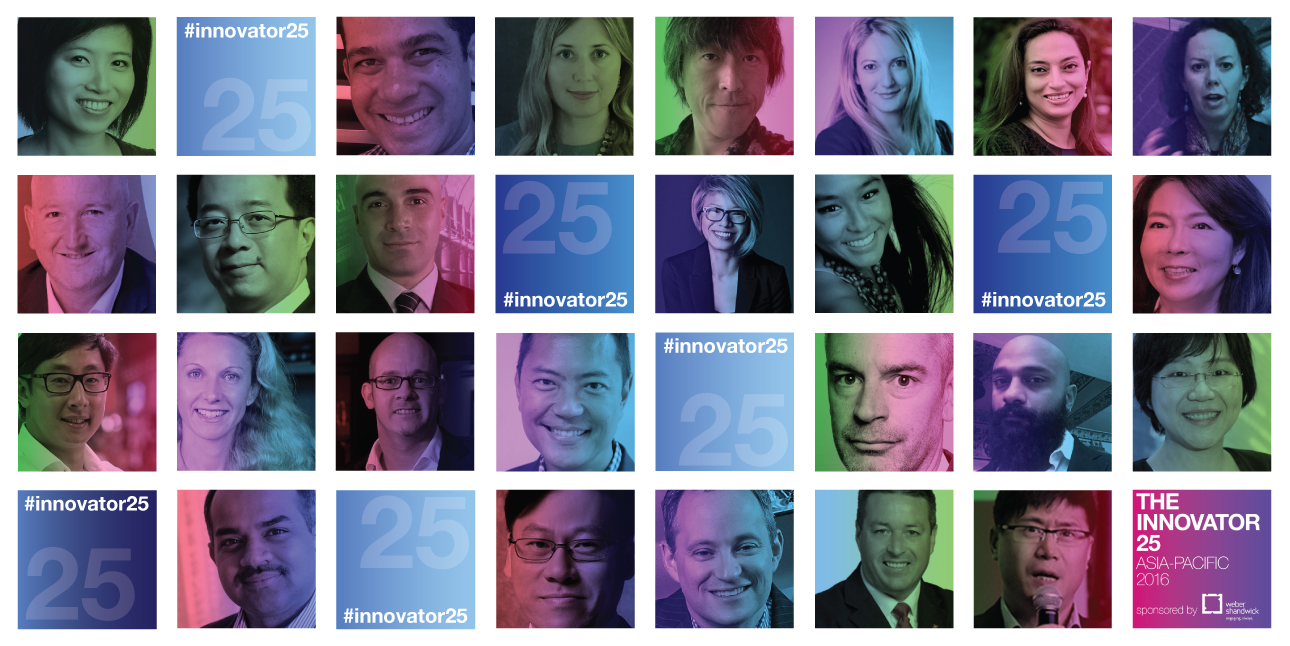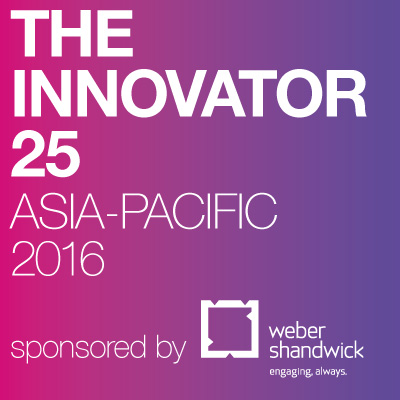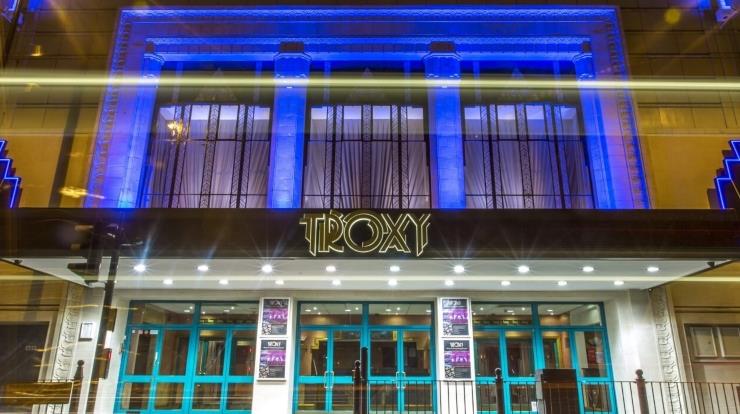
 Podcasts
PodcastsCatch the latest PR news & updates with PRovoke Media's PR Podcasts. Lifting the lid on key industry stories & trends, join our listeners of PR podcasts today.
 Videos
VideosLatest video interviews and campaigns from PRovoke Media, previously known as the Holmes Report.
Long-form journalism that analyzes the issues, challenges and opportunities facing the business and practice of PR.
 Profiles & Interviews
Profiles & InterviewsExplore PR profiles and interviews with leaders from the marketing and PR worlds.
 Crisis Review
Crisis ReviewPR Crisis & Business Crisis review. PRovoke Media's annual analysis of the top reputation crises to rock the corporate sector. Read on here.
 Coronavirus
CoronavirusPRovoke Media's coverage of the Covid-19 crisis, focusing on corporate communication, public affairs & PR industry fallout.
 Trend Forecasts
Trend ForecastsPRovoke Media's PR Trends round up. PRovoke Media's annual forecast of PR trends and news that will impact the PR world in the year ahead...
 Social & Digital
Social & DigitalDedicated to exploring the new frontiers of PR as it dives deeper into social media, content and analytics.
 Technology
TechnologyOur coverage of key technology PR trends and challenges from around the world of digital communications.
 Consumer
ConsumerFrom brand marketing to conscious consumerism, coverage of key marketing and PR trends worldwide.
 Employee Engagement
Employee EngagementPRovoke Media's coverage, analysis and news around the rapidly-shifting area of employee engagement and internal communications.
 Sports Marketing
Sports Marketing Sports PR news, diversity & inclusion trends, views and analysis from PRovoke Media. Subscribe today for the very latest in the world of sports communications.
 Global PR Agency Rankings
Global PR Agency RankingsPRovoke Media's definitive global benchmark of global PR agency size and growth.
Enter PRovoke Media's 2024 Global 250 Agency Ranking and/or our Agencies of the Year competitions now.
 Agencies of the Year
Agencies of the YearPRovoke Media's annual selections for PR Agencies of the Year, across all of the world's major markets.
 Innovator 25
Innovator 25PRovoke Media profiles marcomms innovators from across North America, EMEA and Asia-Pac.
 Creativity in PR
Creativity in PRIn-depth annual research into the PR industry's efforts to raise creative standards.
 Asia-Pacific Communication Index
Asia-Pacific Communication IndexAPACD/Ruder Finn annual study of Asia-Pacific in-house communications professionals.
 SABRE Awards
SABRE AwardsThe world's biggest PR awards programme, dedicated to benchmarking the best PR work from across the globe.
 PRovokeSummit Global
PRovokeSummit GlobalThe biggest PR conference of the year, a high-level forum designed to address the critical issues that matter most.
 PRovoke Media Regional Series
PRovoke Media Regional SeriesA global network of conferences that explore the innovation and disruption that is redefining public relations.
 Agencies of the Year
Agencies of the YearUnrivalled insight into the world's best PR agencies, across specialist and geographic categories.
 Roundtables
RoundtablesOur Roundtables bring together in-house comms leaders with PR firms to examine the future of communications.
 Agency Playbook
Agency PlaybookThe PR industry’s most comprehensive listing of firms from every region and specialty
.jpg) All Jobs
All JobsFind the latest global PR and communications jobs from PRovoke Media. From internships to account executives or directors. See all our PR jobs here.
PRovoke Media's editorial series published in collaboration with partners.
 The Innovator 25:
The Innovator 25:
How do you define innovation?
While the big 'i' word is forever associated with Steve Job’s 'One More Thing' moment, I do believe innovation is an approach that is ownable by anyone. Being innovative is having the drive to keep improving and the desire to challenge the conventional way. In my work, I’m always looking for newer, better, faster, and more cost-effective solutions to solve old problems for my clients that deliver similar or better results.
Most innovative comms/marketing campaign you’ve seen in the last 12 months?
Uber in Asia. A lot has been said about Uber around the world, but I’m most impressed by their speed and efficiency with their marketing as they expanded across Asia. Uber applies the same analytical approach on their marketing campaigns as they do with improving customer experience. This ensures that the learnings from the campaigns are shared, scaled and localized as Uber expands to new markets. Take #UberIceCream for example, it was first launched in 33 cities in 2013, and has been running successfully every summer since. As of this year, the campaign has taken place in over 400 cities around the world, and has truly become a shared cultural experience.
What brands and/or agencies are most innovative when it comes to marketing/PR?
In my opinion, marketing- and advertising-tech companies are the most innovative in marketing and communications. Solutions such as enterprise grade social media management tools, influencer marketing management software, holistic customer relationship management systems, automation and dashboarding have filled the gap left behind by brands and agencies and earned their share of the marketing budget. These solutions will continue to earn a bigger share as they become more mature and more effective. Agencies must become experts at utilizing these tools and integrating it into part of the service offering.
Describe a moment in your career that you would consider ‘innovative.’
In early 2014, I was tasked to support a piece of crisis communications work around food safety for a national government entity in Asia. Due to the sensitivity around the issue, we decided to build our own early crisis detection system based on social and news mentions. The system allowed our crisis team to have an early assessment on a range of issues that could potentially bubble up in real-time, and enabled us to plan for a response well ahead of an actual breakout.
In what area of marketing/PR do you see the most innovation?
Social media & online marketing.
How would you describe the communications/PR industry’s level of innovation?
Where do you see the greatest opportunity for marketing & PR to become more innovative?
Planning & analytics.
Who most influences how innovative a brand’s marketing/PR is?
CEO
Who is your mentor and why?
I’m fortunate to have been inspired by more than one mentor in my career. A shout out to Jackie Price for challenging the convention and not being afraid to go big, to Ged Carroll for his training and mentoring , to Jonathan Hughes and Zaheer Nooruddin on ‘Going All In’ and last but not least, to the 2015 NA Innovator 25 Luke Peterson, whom I had a great pleasure working with.
How do you find inspiration?
I always find that the best way to be inspired is to immerse yourself in culture and unique experiences. In my field, I find the best source of inspiration is by engaging with the likes of subject matter experts, the end users, and the frontline customer service. I feel that these conversations make the data and insights come alive.
Advice for people seeking to bring new ideas, ways of doing things to their organizations?
In part attributed to my training in IT, I always encourage my team to look for smarter ways to solve a problem and develop scalable and repeatable processes in our approach. Just because something has been done one way for a long time, it doesn’t mean it is the best way.
In your opinion, what’s the most innovative place in the world?







Intelligence and insight from across the PR world.
About PRovoke Media Contact Us Privacy & Cookie PolicyWe feel that the views of the reader are as important as the views of the writer. Please contact us at [email protected]
Signup For Our Newsletter Media Kits/Editorial Calendar Jobs Postings A-Z News Sitemap© Holmes Report LLC 2024